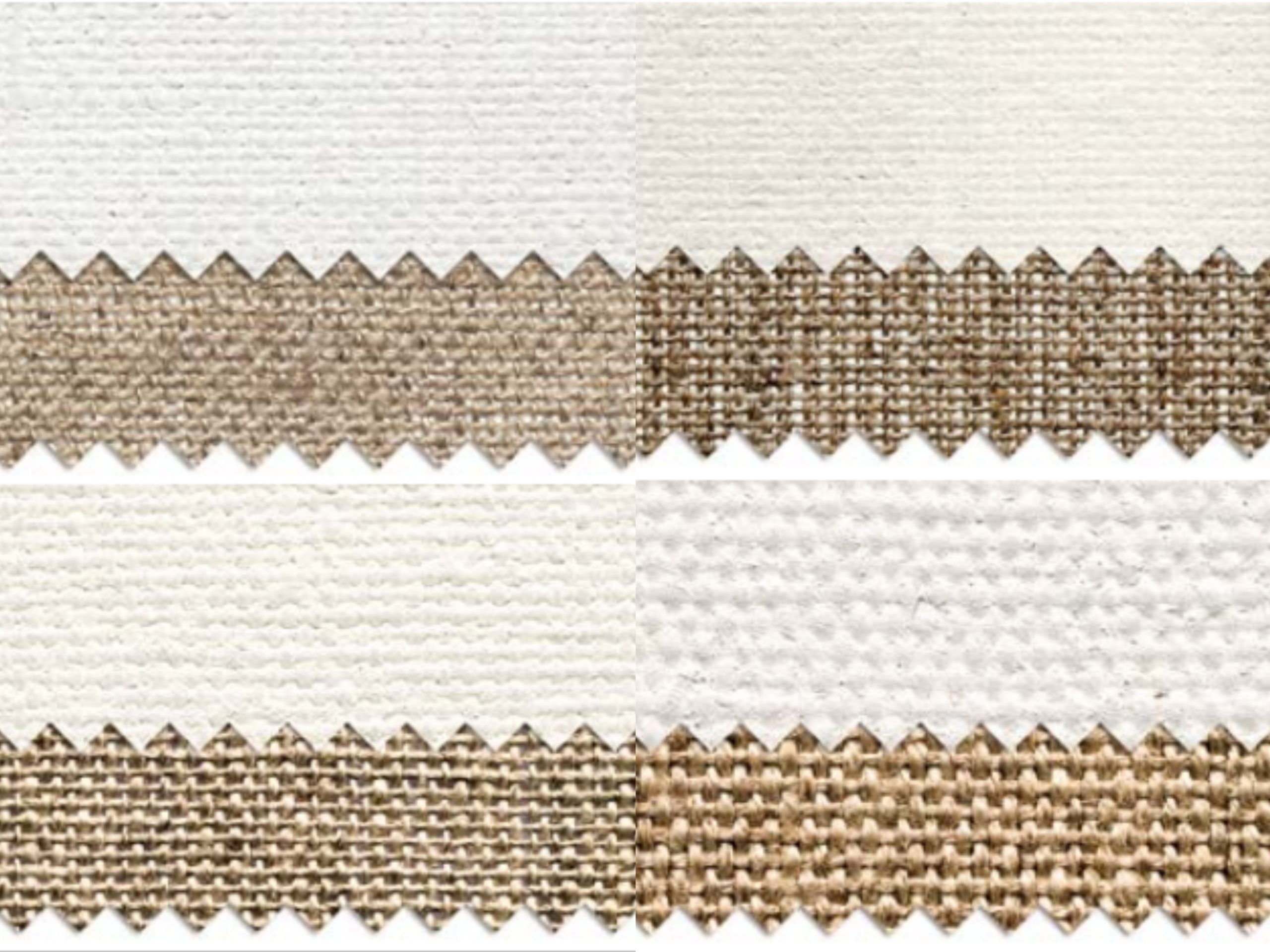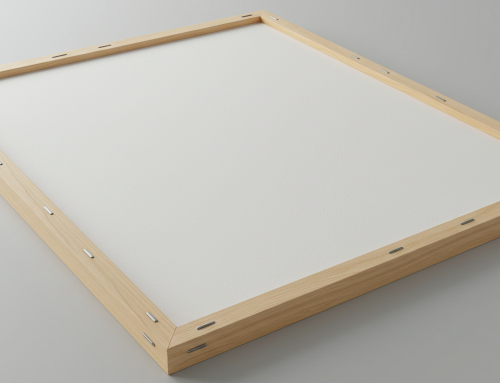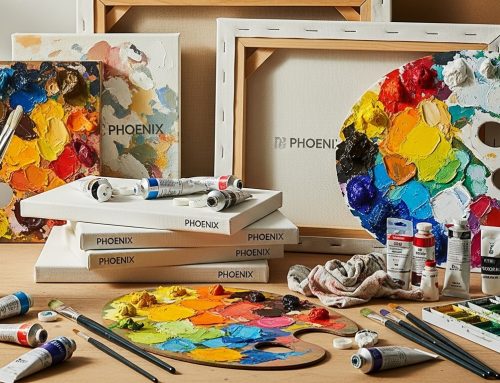How to Select Canvas Roll for Professional Oil Painters
The Vital Role of canvas roll and the Basics of DIY
Canvas roll serves as a fundamental support material for oil painting, carrying the creativity and emotions of artists. Its quality determines whether a masterpiece endures or fades—a truth often overlooked. Traditionally, animal glues like hide glue were used, but modern options include polyvinyl acetate (white latex) or AVE latex (vinyl acetate-ethylene copolymer), readily available at hardware stores.
The process starts with selecting sturdy fabrics—linen or cotton—stretched taut on a frame to create a roll of canvas. A primer, such as Gesso or acrylic coatings, is applied to enhance absorbency, transforming raw material into gessoed canvas rolls. For Large-scale automated producers, boiling polyvinyl alcohol powder with water provides a cost-effective adhesive. However, caution is key—low-quality latex from small manufacturers may contain benzene, posing health risks. This hands-on approach allows artists to create to their unique style, making it a rewarding endeavor for professionals and a potential niche for wholesalers.
Crafting Rolled Canvas Techniques and Pitfalls to Avoid
Creating your own rolled canvas blends art with science, demanding precision and patience. Begin with a tight, flawless fabric, secured firmly to prevent sagging in canvas rolls. Apply the primer in thin, even layers—two to three coats are ideal for oil painting, with each layer drying completely. Sanding after drying refines the surface, offering textures from rough for bold strokes to smooth for fine details on primed canvas rolls. This step turns a roll of primed canvas into a versatile medium for artistic expression.
Pitfalls, however, are common. Rushing the process or using uneven glue ratios can lead to warping or poor adhesion, undermining the quality of oil primed linen canvas rolls. Often in this case, practice makes perfect – it is necessary to record the state of the painting and the method of painting many times, to summarize the rules in order to perfect the process—document your methods to refine the craft.

Linen canvas is classified by the texture of the unprimed fabric into coarse, medium, and fine weaves. Coarse-textured canvas is ideal for bold brushwork and palette knife techniques, offering a robust surface for sweeping, expressive strokes—perfect for landscape and expressionist painters. For instance, Phoenix’s 5317 canvas, meticulously woven from authentic Belgian linen yarn, stands out as a top choice among many artists in these genres. Medium-textured canvas features an even weave with tight weft and warp, making it well-suited for the blending and glazing techniques of realistic styles, widely used in both realistic and expressive oil paintings. Phoenix’s 5318 canvas, crafted from high-quality Belgian linen, has gained recognition and affection from numerous renowned oil painters. Fine-textured linen canvas is typically used for smaller works, excelling in detailed painting styles, particularly portraits. Phoenix’s 6042 canvas, made from finely spun linen with a smooth, glossy surface, is a preferred option for such delicate applications.
Guidelines for Selecting Commercial canvas roll
While DIY offers control, commercial canvas in a roll provides convenience and consistency, a staple for professionals and wholesalers. Quality varies widely, requiring careful selection. Premium canvas rolls from established brands use high-grade linen or blends, treated with professional primers for longevity.
Pan Shih-hsun, China Artists Association member, China Oil Painting Society council member, former Central Academy of Fine Arts Oil Painting Department director, and former Painting Technique and Materials Studio head, offers expert insight, stating: Oil painters should attach great importance to the works of the supporting materials – and how to make their own canvas and buy commercial canvasThis advice underscores the value of certified products, such as those with CE or EN71 markings, ensuring safety and performance.
When selecting rolled canvas prints for bulk purchase, prioritize balanced primer absorbency and inspect for uniformity—knots or uneven textures signal lower quality. Wholesalers benefit from sourcing canvas roll for painting from reputable manufacturers, while dealers can offer buy canvas rolls that meet professional standards.
Canvas Roll Quality and Its Impact on Artistic Legacy
The quality of canvas roll goes beyond technical—it shapes art’s legacy. In China’s past, the lack of professional canvas led to makeshift solutions, many of which deteriorated, leaving cultural gaps. Modern advancements have raised standards, allowing oil paintings to thrive for centuries, while traditional Chinese art on rice paper struggles with preservation. Inferior roll of canvas can crack within decades, a fate avoided by optimizing material and coating ratios in oil primed linen canvas rolls.
This high standard resonates with those seeking premium primed canvas rolls, ensuring artworks remain vibrant. The contrast with fragile media highlights the potential for canvas roll for painting to bridge cultural preservation, a mission that inspires trust among artists, dealers, and wholesalers. Quality canvas becomes a testament to art’s enduring power, aligning with industry aspirations.
Practical Tips and a Vision for the Future of canvas roll
For artists, crafting rolled canvas is a hands-on way to tailor the surface to their style, starting with a small roll of primed canvas to experiment with tension and priming techniques before scaling up to larger canvas on the roll projects. Wholesalers can collaborate with manufacturers to customize canvas dimensions, catering to diverse needs. The evolution from handcrafted to digitally printed—promises greater possibilities.
Wholesalers should prioritize partnerships offering consistent rolled canvas prints, ensuring supply chain reliability. The future lies in technology—digital printing and advanced priming are redefining best art supplies. Leading brands are exploring these frontiers, poised to elevate Chinese art globally, illuminating a vision of timeless legacy.
Enhancing canvas roll with Expert Care
You need to do some proper preparation to maximize the life of the canvas. Apply primers evenly, avoiding over-saturation, which can weaken canvas rolls fabric. Sanding between layers of oil primed linen canvas removes imperfections, creating a smooth ones for intricate details. Wholesalers can offer pre-primed gessoed canvas rolls, saving time for artists and adding value to bulk orders.
Storage matters—keep it in a cool, dry place to prevent moisture damage. Artists can experiment with custom textures on primed canvas rolls, while dealers can market these as premium buy canvas rolls. This attention to detail ensures canvas roll remains a reliable partner in art creation, appealing to all industry levels.
The Global Reach of canvas roll
The global expansion of canvas production has reshaped the art supply landscape. Facilities in Vietnam and Cambodia, paired with a sales hub in Spain, ensure canvas reaches every corner of the world. This network supports wholesalers with consistent canvas supplies, while artists benefit from diverse rolled canvas options. The international presence of canvas roll for painting reflects a commitment to quality, making it a trusted choice for global projects.
Canvas roll as Art’s Eternal Foundation
Canvas serves as a vital foundation for art, carrying the weight of creative expression across generations. From the hands-on process of crafting a DIY primed canvas to the refined production of commercially available rolls, its journey reflects a steadfast commitment to quality and innovation. Unlike the fragile traditional media of the past, such as rice paper, a well-crafted canvas—especially one primed with durable oil-based coatings—offers the resilience needed to preserve cultural masterpieces for centuries. This enduring potential makes it a cornerstone for artists seeking to immortalize their visions, dealers curating reliable supplies, and wholesalers supporting a global market. Through this material, legacies are built and sustained, bridging the past and future of artistic heritage.





